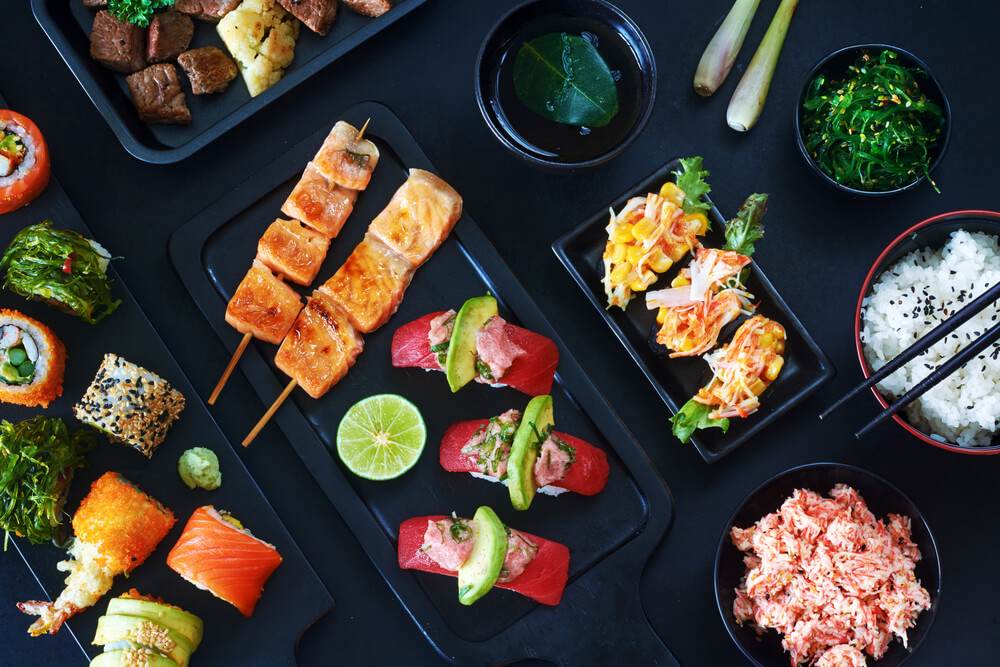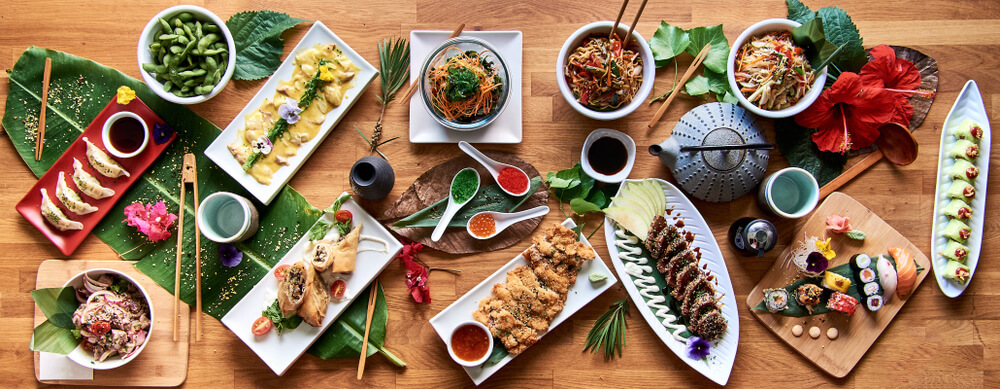As one of the healthiest diets in the whole world, it’s no wonder that Japanese food is getting more popular worldwide. Not only does it look beautiful but it also provides a bunch of flavors as the key to preparing the dishes is to create the perfect balance of available tastes. Precisely because of their healthy diet, Japanese people tend to live a very long and fulfilled life. There are many interesting facts you should know about Japanese cuisine, especially if you’re looking into making some popular dishes a staple in your own diet as well.
Ramen Recipes Continuously Evolve
Ramen is one of the most popular Japanese foods and is considered to be the go-to dish when it comes to Asian comfort food in general. The base for the dish includes ramen noodles and soup, but other elements of the meal can make for a bunch of different dishes entirely. From eggs to different meat options and veggies, ramen recipes continue to get tweaked and changed, which allows for the constant inventive approach to this staple dish of Japanese cuisine.
The More Color There Is, the Better
The Japanese always strive to create a balanced meal, which has become a crucial part of their diet culture. As such, it’s recommended that each meal features at least five different colors. Since rice is a staple in Japanese dishes, white color is already there. It’s up to a diverse range of meat/fish, eggs, veggies, fruit, and so on to create a colorful plate of nutritional and healthy bites. In general, if you manage to present white, yellow, green, red, and black colors on your plate, you’re following the Japanese way of cooking properly.

Garnishes Are There for a Reason
Every single part presented on a plate in Japanese cuisine has its purpose. That said, the garnish is not used to decorate the plate but as an integral part of the meal which will provide a flavor boost or cleanse your palate. With available garnishes on the plate, it’s possible to create different tastes and enjoy your food even more with each bite. There’s a whole science behind the best garnishes for different meals as the key to success is to pair every single item on the plate perfectly.
As Seasons Change So Do the Dishes
Celebrating the change of seasons is very important in Japanese culture. As such, the seasons also reflect in Japanese cuisine dishes. For starters, the basics of Asian cooking is to always use fresh food; with that in mind, it’s only logical to switch things up with every new season. What’s more, the in-season herbs, spices, and ingredients are an ideal way to spruce up staple meals and create a whole new world of flavors. In that sense, the food on the table is always something to look forward to.
The Abundance of Small Portions
Many people who haven’t actually tried the traditional Asian food setup may be under the false belief that Japanese and other Asian cultures always eat small portions. However, that’s not exactly true. While one type of dish may be served on a smaller plate, the entire table setup of a Japanese meal involves a couple of different plates, with different ingredients and garnishes. So, even though the single plate might be small in portion, the entire meal of these smaller portions is more than enough to keep one full and satiated.
A Lot of Veggies Doesn’t Mean It’s 100% Vegetarian
While it’s true that a big part of the Japanese meals includes many different vegetables, it can still be very difficult to find a 100% vegetarian meal in Japanese cuisine. Foodies who are interested in trying Asian comfort food may not find this to be a problem, but if you plan to stick to your diet, you should be aware that even the dishes made solely of different veggies and rice tend to be cooked in fish broth or covered in bonito flakes. After all, fish and seafood are a staple in the Japanese diet, which is why it’s challenging for local cooks to completely avoid using those in food prep.
Traditional Sweets Are a Work of Art
Traditional Japanese sweets are known as wagashi and they’re a big part of Japanese culture. They’re typically sold in supermarkets and train stations, always packed and wrapped beautifully, as a go-to gift for family and friends. The way these sweets are made, decorated, packed, and presented definitely shows the creativity and skill necessary to keep the traditional techniques and recipes celebrated and appreciated in contemporary times.
There are Food Etiquette Rules to Follow
Japanese culture is famous for its etiquette rules in every aspect of life, which also includes food. For instance, when you’re enjoying a meal such as a noodle soup, it’s polite to show that enjoyment by slurping the soup loudly. On the other hand, when you use chopsticks and finish your meal, never ever stick the chopsticks straight into the bowl of rice; this is a funeral custom in Japan. Instead, put them across the bowl/plate. What’s more, when you’re eating out in a Japanese restaurant, make sure to avoid leaving a messy plate behind. Even if you have some used napkins to dispose of, at least try to fold them nicely in the corner of the plate.

Sustainability of Japanese Cuisine May Not Be for Everyone
Those that get squeamish easily should definitely avoid visiting Japanese food markets or refrain from trying meals in Japanese restaurants that clearly state the use of ingredients one may not be used to. Essentially, one of the rules that Japanese cuisine sticks to is sustainability – nothing should go to waste. In that sense, food is appreciated by allowing the locals to prepare all sorts of meals from all sorts of parts and ingredients. As such, it’s even possible to find tuna eyes sold separately in the markets.
Tableware Is of Great Importance
To fully enjoy a meal the Japanese way, a great deal of attention is given to the choice of tableware such as bowls and plates. After all, it’s not just the actual food that will make the mealtime enjoyable, but the way that food is presented in its container as well. In that respect, the overall design and color of the tableware are usually selected with utmost care to further enhance the appearance of food that’s being served.
An interesting fact about traditional Japanese cuisine is that it has been placed in the Intangible Cultural Heritage list under UNESCO protection as a culturally valuable way of eating that makes for a crucial part of the country’s customs, traditions, and lifestyle. If you’re interested in trying UNESCO-protected Japanese food as well as other staple Asian comfort foods even without being able to visit this area of the world, simply pay us a visit at Ichimora. We’re an Asian food restaurant that also serves Japanese food delights. It’s our goal to provide our customers with the carefully and lovingly made meals by practicing the traditional, centuries-old preparation and cooking techniques. Fill your tummy with the warmth and deliciousness of our meals while enjoying a comfortable and relaxing atmosphere of our Ichimora restaurant.


